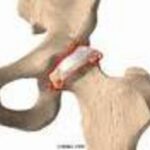What is a bone spur? How do you know you have a bone spur, and can you do something about a bone spur once you discover you have one? Learn what a bone spur is and how you can tell you have one, and most of all, what you can do about it.
A bone spur is a protrusion of bone that develops on the edges of the bone itself. Bone spurs alone aren’t painful, so they can go for years without being noticed. It’s when that projection of bone starts rubbing on other bones or joints that the bone spur can be detected or noticed, and start affecting a person’s life. They can form on any bone, but a bone spur typically occurs in areas where bone meets bone, but can occur in spots where bones meet ligaments as well. Bone spurs can even be on the spine.
A bone spur is usually a result of a joint disease already apparent, such as osteoarthritis or other conditions that deteriorate the bones or joints. What happens is as joints deteriorate, the body often responds by rebuilding strength to the joints and bones by building up the bone surrounding joints. This results in overproduction of the bones, causing a bone spur. Bone spurs also occur in old age, as joints and bones age naturally and the body fights to repair them.
Symptoms of a bone spur are basically nonexistent at first, as the bone spur itself is not painful at all. It’s when the bone spur becomes large enough to rub on other bones or joints that you may notice an issue. Symptoms of a bone spur include pain in certain and specific joints, or the ability to move joints due to pain. Bone spurs occur most often in knee joints, spine, fingers, neck, shoulder, and the heels. When a bone spur becomes apparent, depending on where it is, it can make walking difficult, moving your arm difficult, swallowing or breathing difficult as well. The pain remains constant once a bone spur is apparent and pushing on nerves and joints.
Treatment for a bone spur depends on the severity of it. If a bone spur is discovered but not painful (they are not easily detected in X-rays unless they have become very large), then treatment is not usually needed. For more painful or damaging bone spurs, anti-inflammatories are typically prescribed to manage swelling. Surgical intervention is usually only performed when a bone spur becomes so severe it limits mobility extensively.
If you feel pain in one or more joints and it is chronic pain, or you feel you may have joint issues, see your doctor to rule out other medical issues and possibly diagnose your problems as a bone spur. If you already have a joint disease or condition and are suffering from pain, see your doctor immediately to see if a bone spur is to blame.
Source:
http://www.mayoclinic.com/health/bone-spurs/DS00627



